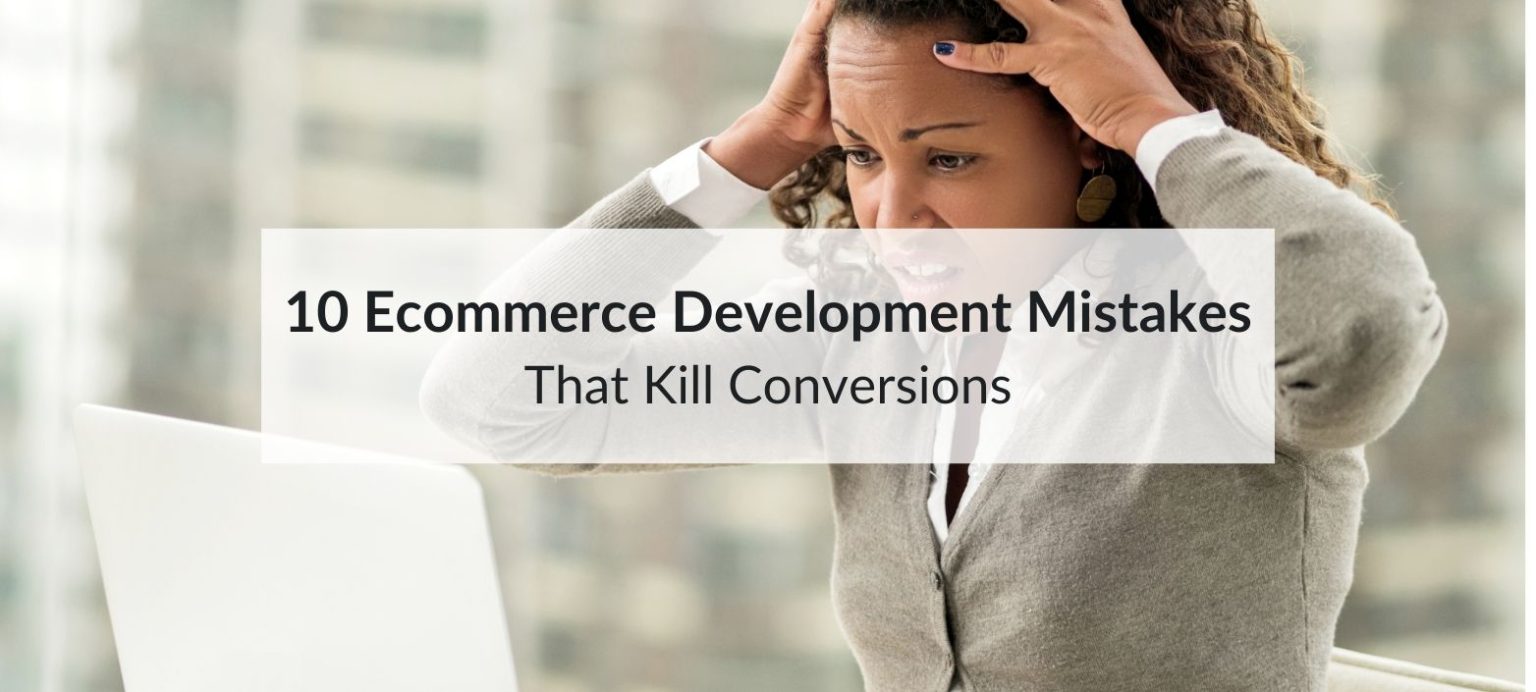Ecommerce development affects how people shop online and if they decide to buy. Many store owners spend time adding products or making the site look nice but forget that how the site works and is set up can change sales. Minor errors such as slow pages, confusing navigation, or inadequate product details can result in substantial lost revenue.
This guide highlights 10 common ecommerce development mistakes and provides actionable solutions to improve conversions, enhance user experience, and increase overall revenue.
Why Ecommerce Development Matters
Ecommerce development balances functionality, usability, and performance. Every element of an online store affects customer perception, from page load speed and mobile responsiveness to product page content and trust signals. Optimised development ensures that visitors can navigate quickly, find products efficiently, and complete purchases without friction. Poorly executed development leads to high bounce rates and lost sales, while careful planning and optimisation create an efficient platform for growth.

10 Ecommerce Development Mistakes That Kill Conversions
Mistake #1: Slow Page Loading Times
Speed is critical in ecommerce. Delays in page load increase bounce rates and reduce conversions. Studies show that a one-second delay can lower sales by up to 7%. Optimisation strategies include compressing images, using content delivery networks (CDNs), minifying code, and selecting reliable hosting. Tools such as Google PageSpeed Insights or GTmetrix provide detailed recommendations to improve speed and monitor performance over time.
Solution:
Compress all images before uploading, enable browser caching, use a CDN for global reach, and review your hosting plan regularly to ensure optimal server performance.
Mistake #2: Poor Mobile Optimisation
Mobile traffic represents the majority of ecommerce visits, and a poor mobile experience decreases conversions significantly. Mobile optimisation requires responsive design, clear text, appropriately sized buttons, and intuitive navigation. Optimised mobile experiences maintain engagement, reduce friction, and increase the likelihood of completing a purchase.
Solution:
Implement responsive design, adjust font sizes and button layouts for mobile screens, simplify menus, and test your site on multiple devices to ensure smooth usability.
Mistake #3: Complicated Checkout Process
Checkout processes with multiple steps, excessive fields, or forced account creation lead to abandoned carts. Streamlining checkout with guest options, minimal required information, and multiple payment methods improves completion rates. Simplified checkouts reduce friction and encourage repeat purchases.
Solution:
Offer guest checkout, reduce form fields to essentials, allow multiple payment options, and add progress indicators to show users how close they are to completing the purchase.
Mistake #4: Weak Product Pages
Product pages act as the digital salesperson for your store. Pages lacking detailed descriptions, high-quality images, and clear calls-to-action discourage purchases. Include multiple images, videos, specifications, reviews, and pricing information to build trust and provide the details buyers need.
Solution:
Add multiple high-quality images, videos showing product use, clear descriptions, bullet-point specifications, customer reviews, and clear call-to-action buttons.
Mistake #5: Ignoring SEO Best Practices
SEO ensures long-term visibility and organic traffic. Missing meta tags, inadequate headings, poor internal linking, or missing alt text limits search engine indexing and reduces potential reach. Optimising product titles, headers, descriptions, and URLs improves search rankings. Structured data and following SEO best practices help customers discover products through search engines. HubSpot SEO resources provide additional guidance.
Solution:
Conduct keyword research, optimise meta titles and descriptions, add alt text to images, create internal links, and use structured data to improve search engine visibility.
Mistake #6: Lack of Trust Signals
Customers need reassurance that their information is secure and that the brand is reliable. Display SSL certificates, payment security badges, customer reviews, and transparent return policies. Trust signals increase the likelihood of conversions by reassuring customers about their purchase decisions.
Solution:
Display SSL badges, show payment method icons, highlight customer reviews prominently, provide easy-to-find return policies, and ensure contact information is visible.
Mistake #7: Overcomplicated Navigation
Confusing navigation frustrates users and increases exit rates. Long menus, hidden categories, and unclear labels make it difficult for visitors to locate products. Implement a clear navigation structure with categories, subcategories, and a prominent search bar to allow users to browse efficiently and explore multiple products.
Solution:
Simplify menus, organise categories logically, use clear labels, include a search bar, and test navigation flow with real users for clarity.
Mistake #8: Ignoring Analytics and Data
Analytics reveal how users interact with a website and highlight areas for improvement. Tools like Google Analytics and Hotjar provide insights into page performance, conversion rates, and user behavior. Testing layouts, checkout flows, and product pages using data-driven experiments allows businesses to optimise development and increase conversions.
Solution:
Set up Google Analytics and Hotjar, monitor key metrics like bounce rate and conversion rate, and use A/B testing to make informed improvements based on user behavior.
Mistake #9: Poor Integration With Third-Party Tools
Disconnected systems for email marketing, payment processing, or inventory management create inefficiencies and inconsistencies. Smooth integration ensures accurate data, reliable operations, and consistent user experiences. Effective integration supports automated workflows, real-time updates, and better customer service, contributing to higher conversions.
Solution:
Ensure all third-party tools connect seamlessly, automate workflows where possible, and check data consistency across platforms to prevent errors.
Mistake #10: Neglecting Security Measures
Security is fundamental for building customer confidence. Data breaches, insecure payment processes, and unprotected personal information reduce conversions and damage reputation. Use HTTPS, secure payment gateways, regular software updates, and monitoring tools to maintain a secure platform. Visible security measures encourage trust and purchase completion.
Solution:
Implement HTTPS, keep software updated, use secure payment processors, regularly monitor for vulnerabilities, and clearly display security badges on checkout pages.
Practical Tools to Improve Ecommerce Development

Tool 1: Page Speed and Performance Monitoring
Keeping your website fast and reliable is essential for user experience and conversions. Tools like GTmetrix and Google PageSpeed Insights help track page load times, identify bottlenecks, and suggest improvements. Key actions include compressing images, enabling browser caching, and reducing unnecessary JavaScript. Regularly monitoring performance ensures that any issues are addressed before they affect visitors, while faster pages also improve search engine rankings.
Tool 2: Conversion Rate Optimisation Software
Conversion Rate Optimisation (CRO) tools such as Optimizely and VWO allow you to test different versions of landing pages, product pages, and checkout flows. By experimenting with layouts, content, and call-to-action buttons, you can see what drives the most conversions. When combined with analytics data, these tools provide actionable insights, helping you make informed decisions to improve the online shopping experience and steadily increase sales.
Conclusion
Ecommerce development determines how effectively an online store turns visitors into buyers. Fixing slow pages, confusing navigation, weak product pages, poor mobile experience, and missing trust signals can noticeably improve sales. Tracking customer behavior with analytics, simplifying the shopping process, and securing payments creates a reliable experience for shoppers. Using these approaches helps online stores increase conversions, build trust, and grow steadily over time.

